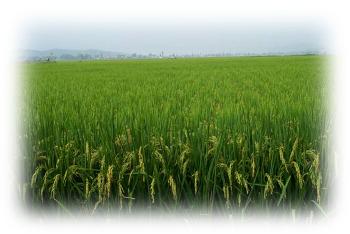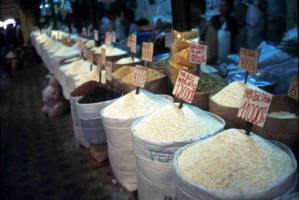Rice genetic resources
Contact person for Rice: Fiona Hay, IRRI, Philippines
Contributors to this page: T.T. Chang Genetic Resources Centre-IRRI, Los Baños, Philippines (Ruaraidh Sackville Hamilton, Ken McNally, Flora de Guzman, Renato Reaño, Soccie Almazan, Adelaida Alcantara, Elizabeth Naredo); AfricaRice, Cotonou, Benin (Ines Sánchez); UPLB-University of the Philippines at Los Baños (Teresita Borromeo).
External reviewers: Teresita Borromeo (UP College of Agriculture, Philippines), Taesan Kim (Korea, former head of RDA genebank).
Compilation of best practices
Information on current practices for the management of rice was provided by partners and was reviewed in the context of the genebank standards (FAO/IPGRI, 1994), IRRI - Genetic Resources Center and Rice Knowledge Bank to determine options for management of rice in base and active collections. This provided the basic information for selection, justification and recommendation of best practices. Information was then compiled into a data collection format that was then uploaded into the relevant structure of this website. The rice best practices were done separately for cultivated and for wild types, due to their different requirements.
Importance and origin
|
|
Rice is the staple food for about 50% of the world’s population. It is grown commercially in over 100 countries in all continents except Antarctica, although the great majority of production and consumption is in Asia. Its range is primarily tropical to sub-tropical, but it is cultivated as far north as 53°N by the Amur River on the Chinese-Russian border and as far south as 39°S in Te Puke, New Zealand.
Rice has low water-use efficiency and can be considered semi-aquatic, not suited to very dry areas. While it can be grown with normal water supply like other cereals ('upland rice'), the most intensive production systems are, uniquely to rice, under conditions of controlled temporary flooding ('lowland rice'), either rain-fed or irrigated. The flooding kills weeds and some soil borne pathogens such as nematodes, and also maintains high organic matter in the soil. Also unlike other cereals, rice is not completely an annual crop, and in some areas a so-called 'ratoon crop' is produced by vegetative regrowth from the stubble left after harvesting the main first crop.
Types
There are two main cultivated types: Oryza sativa and O. glaberrima. The genus Oryza contains about 23 wild species, mostly diploid with 2 n=24 with some allotetraploids.
Note that the North American product marketed as 'wild rice' is not Oryza; it is Zizania palustris, one of the 11 related genera in the same tribe as Oryza. Different species assemblages are found in Africa, Asia, Australia and Latin America. The species of Oryza are grouped into series of more or less inter-fertile species complexes. The two cultivated species and six of the wild species share the same genome in the 'O. sativa species complex'; the comparative ease of interspecific crosses within this complex has resulted in the effective use of wild species for transferring new traits into O. sativa, particularly for disease and pest resistance, but also for a number of other genes, including the CMS (cytoplasmic male sterility) gene used to start the hybrid rice industry.
Utilization
|
Different rice varieties on the market (photo: IRRI) |
Rice was first domesticated in Asia as Oryza sativa, possibly 10 000-15 000 years ago. The earliest reported remains of rice grains are from an archaeological site in South Korea, dated to about 13 000 years BP, but this claim has not been independently confirmed. The earliest confirmed archaeological evidence dates from 10 000 years BP in the Yangtze valley in China. Molecular evidence suggests that it was domesticated at least twice independently, in widely different locations from different ecotypes of the wild ancestors of the O. rufipogon - O. nivara complex, associated with two mega-groups of varieties known as japonica (with the closely-related javanica now known as tropical japonica, and the Basmati type of aromatic rices) and indica (with the somewhat similar deepwater types). Molecular evidence also points to extensive historical introgression between variety groups, generating many intermediates between the groups, so that classification remains difficult. In addition, introgression between wild and cultivated forms is still common wherever the wild ancestors grow close to crops. Thus the process of domestication is still continuing: wild genes continue to be introduced into cultivars and the wild genepool now contains many genes from cultivated varieties. The O. sativa genepool is now a highly diverse and complex mix of genes with many intermediate forms, forming a broad band of primary genetic diversity extending from the Ganges plains below the eastern foothills of Himalaya, through upper Myanmar, Laos, Thailand and Vietnam, to southern China. Two mega centres of diversity are observed: one centred in Yunnan province of China and stretching west to Nepal and east to the Red rive delta of northern Vietnam; and the second centred in northern India and Bangladesh.
A second species, O. glaberrima, was domesticated in West Africa from O. barthii, probably about 3500 BP. Unlike O. sativa, cultivation of the African species did not spread outside the region. With its comparatively short domestication history and narrow range, the species is less diverse than O. sativa.
References and further reading
International Rice GeneBank Operations Manual [online]. Available from: http://www.knowledgebank.irri.org/GRCManuals/default.htm. Date accessed: 1 February 2010.
Rice Knowledge Bank [online]. Available from: http://www.knowledgebank.irri.org/. Date accessed: 15 July 2013.
FAO/IPGRI. 1994. Genebank standards. Food and Agriculture Organization of the United Nations, Rome and International Plant Genetic Resources Institute, Rome. Available in English, Spanish, French and Arabic.
Comments
- No comments found



 Rice
Rice


Leave your comments
Post comment as a guest